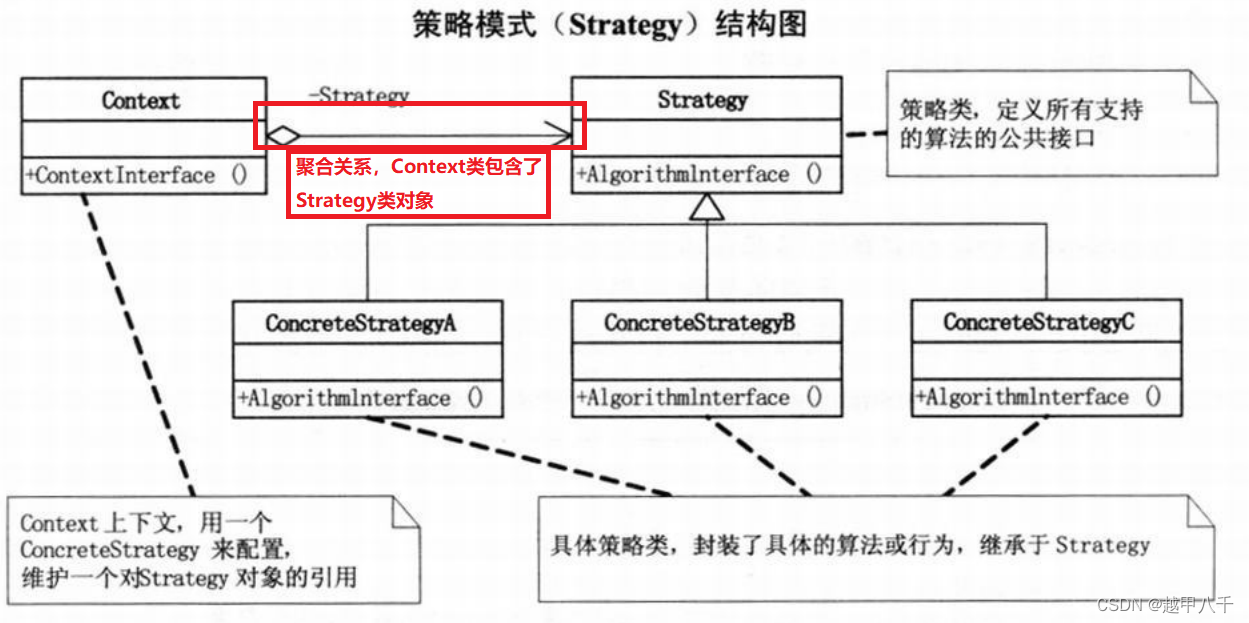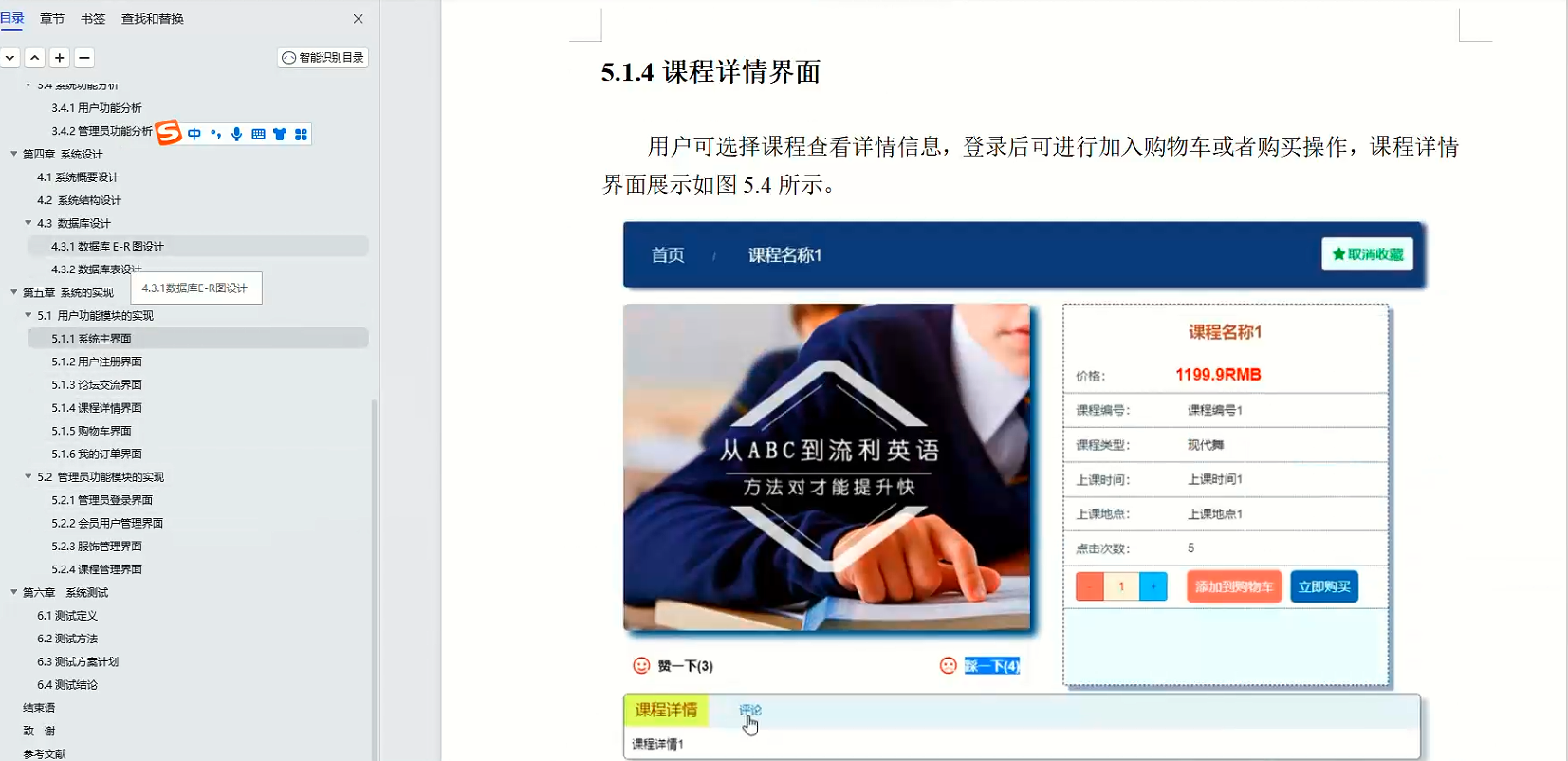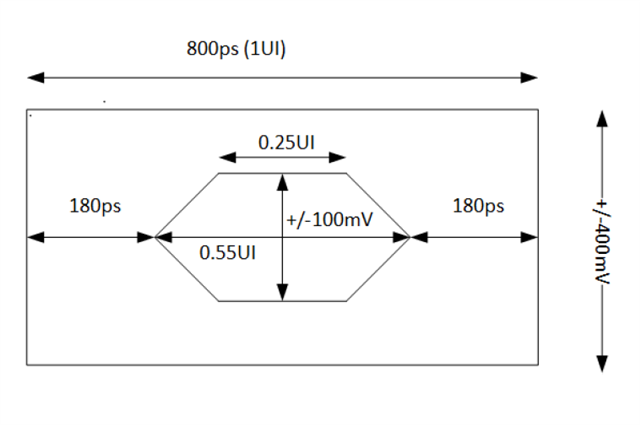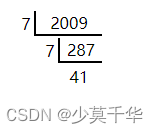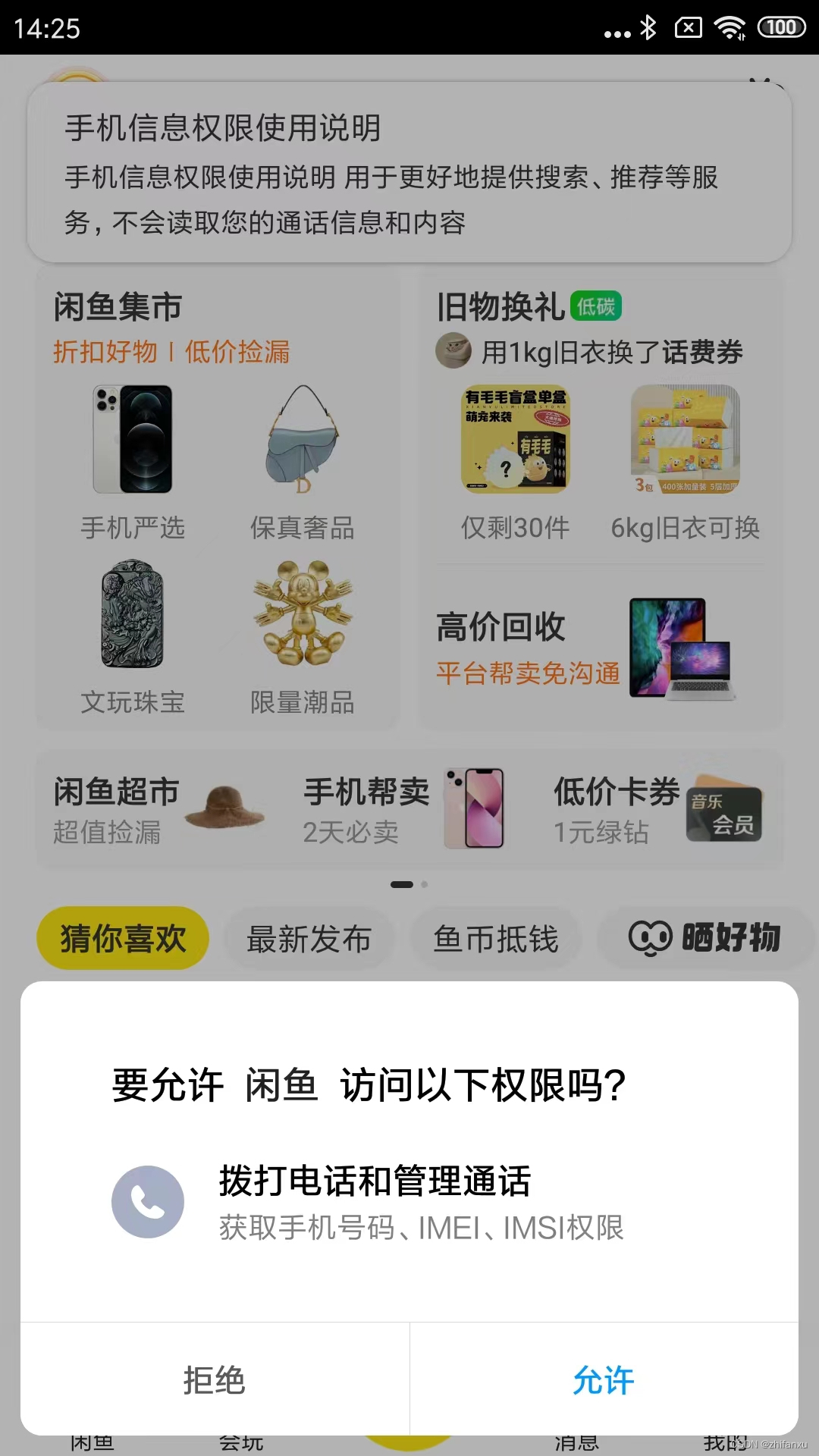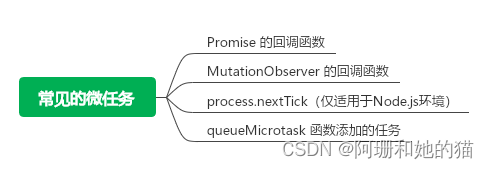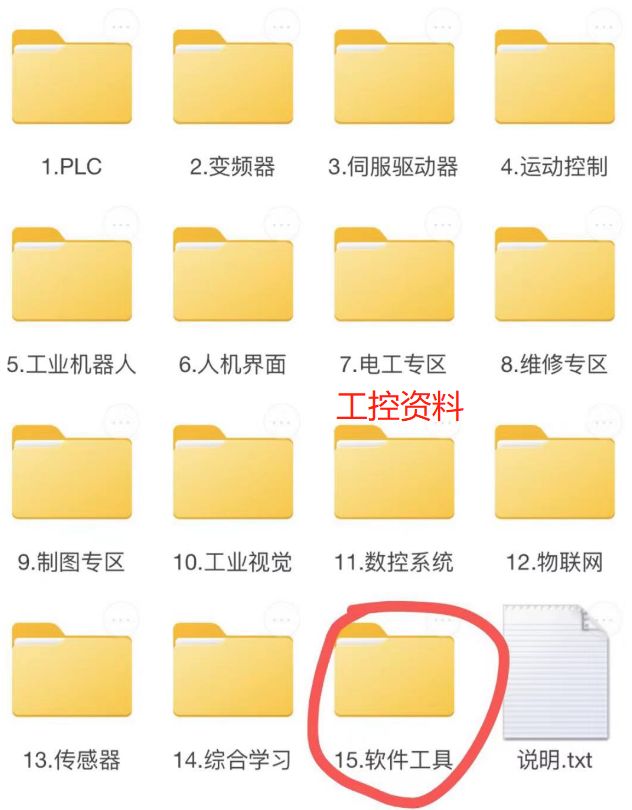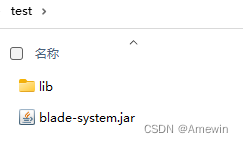经过前几篇博客的学习
Spring
系列的基本操作已经实现的差不多了,接下来,我们来学习更重要的知识,将前端传递的数据存储起来,或者查询数据库里面的数据。
一、MyBatis 是什么?
MyBatis
是一款优秀的持久层框架,它支持自定义
SQL
、存储过程以及高级映射。
MyBatis
去除了几乎所有的
JDBC
代码以及设置参数和获取结果集的工作。MyBatis
可以通过简单的
XML
或注解来配置和映射原始类型、接口和
Java POJO
(
Plain Old Java Objects
,普通老式
Java 对象)为数据库中的记录。
简单来说 MyBatis
是更简单完成程序和数据库交互的工具,也就是更简单的操作和读取数据库工具。
Mybatis官网
二、为什么要学习 MyBatis?
对于后端开发来说,程序是由以下两个重要的部分组成的:
1. 后端程序2. 数据库
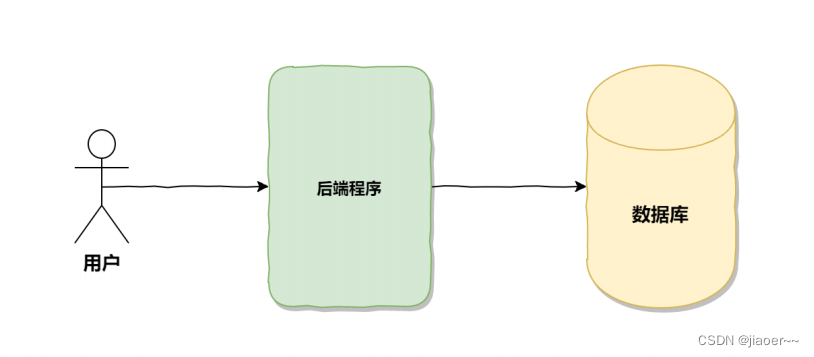
而这两个重要的组成部分要通讯,就要依靠数据库连接工具,那数据库连接工具有哪些?比如之前我们学习的
JDBC
,还有今天我们将要介绍的 MyBatis
,那已经有了
JDBC
了,为什么还要学习
MyBatis
?
这是因为
JDBC
的操作太繁琐了,我们回顾一下
JDBC
的操作流程:
1. 创建数据库连接池 DataSource2. 通过 DataSource 获取数据库连接 Connection3. 编写要执行带 ? 占位符的 SQL 语句4. 通过 Connection 及 SQL 创建操作命令对象 Statement5. 替换占位符:指定要替换的数据库字段类型,占位符索引及要替换的值6. 使用 Statement 执行 SQL 语句7. 查询操作:返回结果集 ResultSet ,更新操作:返回更新的数量8. 处理结果集9. 释放资源
JDBC 操作示例回顾
下面的一个完整案例,展示了通过
JDBC
的
API
向数据库中添加一条记录,修改一条记录,查询一条记录的操作。
-- 创建数据库
create database if not exists `library` default character set utf8mb4;
-- 使用数据库
use library;
-- 创建表
create table if not exists `soft_bookrack` (
`book_name` varchar(32) NOT NULL,
`book_author` varchar(32) NOT NULL,
`book_isbn` varchar(32) NOT NULL primary key
) ;
以下是
JDBC
操作的具体实现代码:
import javax.sql.DataSource;
import java.sql.Connection;
import java.sql.PreparedStatement;
import java.sql.ResultSet;
import java.sql.SQLException;
public class SimpleJdbcOperation {
private final DataSource dataSource;
public SimpleJdbcOperation(DataSource dataSource) {
this.dataSource = dataSource;
}
/**
* 添加一本书
*/
public void addBook() {
Connection connection = null;
PreparedStatement stmt = null;
try {
//获取数据库连接
connection = dataSource.getConnection();
//创建语句
stmt = connection.prepareStatement(
"insert into soft_bookrack (book_name, book_author, book_isbn) values (?,?,?);"
);
//参数绑定
stmt.setString(1, "Spring in Action");
stmt.setString(2, "Craig Walls");
stmt.setString(3, "9787115417305");
//执行语句
stmt.execute();
} catch (SQLException e) {
//处理异常信息
} finally {
//清理资源
try {
if (stmt != null) {
stmt.close();
}
if (connection != null) {
connection.close();
}
} catch (SQLException e) {
//
}
}
}
/**
* 更新一本书
*/
public void updateBook() {
Connection connection = null;
PreparedStatement stmt = null;
try {
//获取数据库连接
connection = dataSource.getConnection();
//创建语句
stmt = connection.prepareStatement(
"update soft_bookrack set book_author=? where book_isbn=?;"
);
//参数绑定
stmt.setString(1, "张卫滨");
stmt.setString(2, "9787115417305");
//执行语句
stmt.execute();
} catch (SQLException e) {
//处理异常信息
} finally {
//清理资源
try {
if (stmt != null) {
stmt.close();
}
if (connection != null) {
connection.close();
}
} catch (SQLException e) {
//
}
}
}
/**
* 查询一本书
*/
public void queryBook() {
Connection connection = null;
PreparedStatement stmt = null;
ResultSet rs = null;
Book book = null;
try {
//获取数据库连接
connection = dataSource.getConnection();
//创建语句
stmt = connection.prepareStatement(
"select book_name, book_author, book_isbn from soft_bookrack where book_isbn =?"
);
//参数绑定
stmt.setString(1, "9787115417305");
//执行语句
rs = stmt.executeQuery();
if (rs.next()) {
book = new Book();
book.setName(rs.getString("book_name"));
book.setAuthor(rs.getString("book_author"));
book.setIsbn(rs.getString("book_isbn"));
}
System.out.println(book);
} catch (SQLException e) {
//处理异常信息
} finally {
//清理资源
try {
if (rs != null) {
rs.close();
}
if (stmt != null) {
stmt.close();
}
if (connection != null) {
connection.close();
}
} catch (SQLException e) {
//
}
}
}
public static class Book {
private String name;
private String author;
private String isbn;
//省略 setter getter 方法
}
}
从上述代码和操作流程可以看出,对于
JDBC
来说,整个操作非常的繁琐,我们不但要拼接每一个参数,而且还要按照模板代码的方式,一步步的操作数据库,并且在每次操作完,还要手动关闭连接等,而所有的这些操作步骤都需要在每个方法中重复书写。于是我们就想,那有没有一种方法,可以更简单、更方便的操作数据库呢?
答案是肯定的,这就是我们要学习
MyBatis
的真正原因,它可以帮助我们更方便、更快速的操作数据库。
三、怎么学MyBatis?
MyBatis
学习只分为两部分:
- 配置 MyBatis 开发环境;
- 使用 MyBatis 模式和语法操作数据库。
四、第一个MyBatis查询
开始搭建
MyBatis
之前,我们先来看一下
MyBatis
在整个框架中的定位,框架交互流程图:
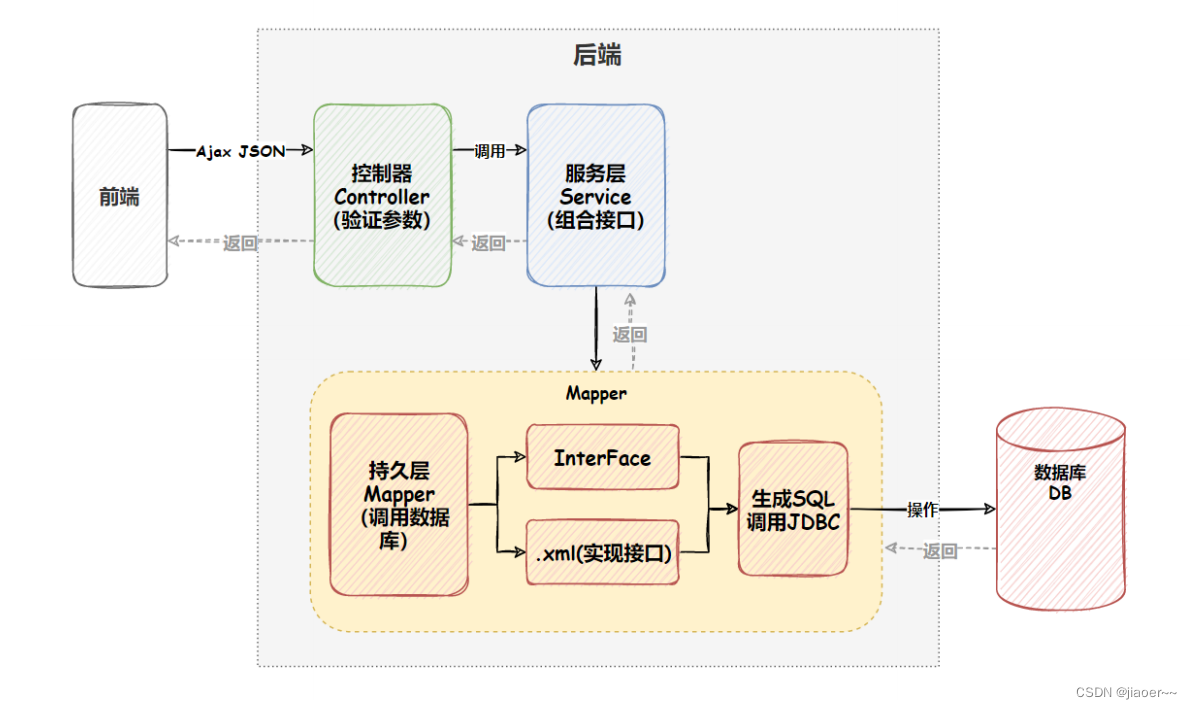
MyBatis
也是一个
ORM
框架,
ORM
(
Object Relational Mapping)
,即对象关系映射。在面向对象编程语言中,将关系型数据库中的数据与对象建立起映射关系,进而自动的完成数据与对象的互相转换:
1. 将输入数据(即传入对象) +SQL 映射成原生 SQL2. 将结果集映射为返回对象,即输出对象
ORM
把数据库映射为对象:
- 数据库表(table)--> 类(class)
- 记录(record,行数据)--> 对象(object)
- 字段(field) --> 对象的属性(attribute)
一般的
ORM
框架,会将数据库模型的每张表都映射为一个
Java
类。
也就是说使用
MyBatis
可以像操作对象一样来操作数据库中的表,可以实现对象和数据库表之间的转换,接下来我们来看
MyBatis
的使用吧。
4.1 创建数据库和表
接下来我们要实现的功能是:使用
MyBatis
的方式来读取用户表中的所有用户,我们使用个人博客的数据库和数据包,具体
SQL
如下。
-- 创建数据库
drop database if exists mycnblog;
create database mycnblog DEFAULT CHARACTER SET utf8;
-- 使用数据数据
use mycnblog;
-- 创建表[用户表]
drop table if exists userinfo;
create table userinfo(
id int primary key auto_increment,
username varchar(100) not null,
password varchar(32) not null,
photo varchar(500) default '',
createtime datetime default now(),
updatetime datetime default now(),
`state` int default 1
);
-- 创建文章表
drop table if exists articleinfo;
create table articleinfo(
id int primary key auto_increment,
title varchar(100) not null,
content text not null,
createtime datetime default now(),
updatetime datetime default now(),
uid int not null,
rcount int not null default 1,
`state` int default 1
);
-- 创建视频表
drop table if exists videoinfo;
create table videoinfo(
vid int primary key,
`title` varchar(250),
`url` varchar(1000),
createtime datetime default now(),
updatetime datetime default now(),
uid int
);
-- 添加一个用户信息
INSERT INTO `mycnblog`.`userinfo` (`id`, `username`, `password`, `photo`, `createtime`, `updatetime`, `state`)
VALUES
(1, 'admin', 'admin', '', '2021-12-06 17:10:48', '2021-12-06 17:10:48', 1);
-- 文章添加测试数据
insert into articleinfo(title,content,uid)
values('Java','Java正文',1);
-- 添加视频
insert into videoinfo(vid,title,url,uid) values(1,'java title','http://www.baidu.com',1);4.2 添加MyBatis框架支持
添加
MyBatis
框架支持分为两种情况:一种情况是对自己之前的
Spring
项目进行升级,另一种情况是创建一个全新的
MyBatis
和
Spring Boot 的项目,下面我们分别来演示这两种情况的具体实现。
4.2.1 老项目添加MyBatis
如果是在老项目中新增功能,添加框架支持:
<!-- 添加 MyBatis 框架 -->
<dependency>
<groupId>org.mybatis.spring.boot</groupId>
<artifactId>mybatis-spring-boot-starter</artifactId>
<version>2.1.4</version>
</dependency>
<!-- 添加 MySQL 驱动 -->
<dependency>
<groupId>mysql</groupId>
<artifactId>mysql-connector-java</artifactId>
<scope>runtime</scope>
</dependency>
添加了
MyBatis
之后,为什么还需要添加
MySQL
驱动呢?
MyBatis
就像一个平台(类似京东),而数据库相当于商家有很多种,不止有
MySQL
,还有
SQL Server
、
DB2
等等
.....
因此这两个都是需要添加的。
扩展:在老项目中快速添加框架,跟简单的操作方式是使用
EditStarters
插件
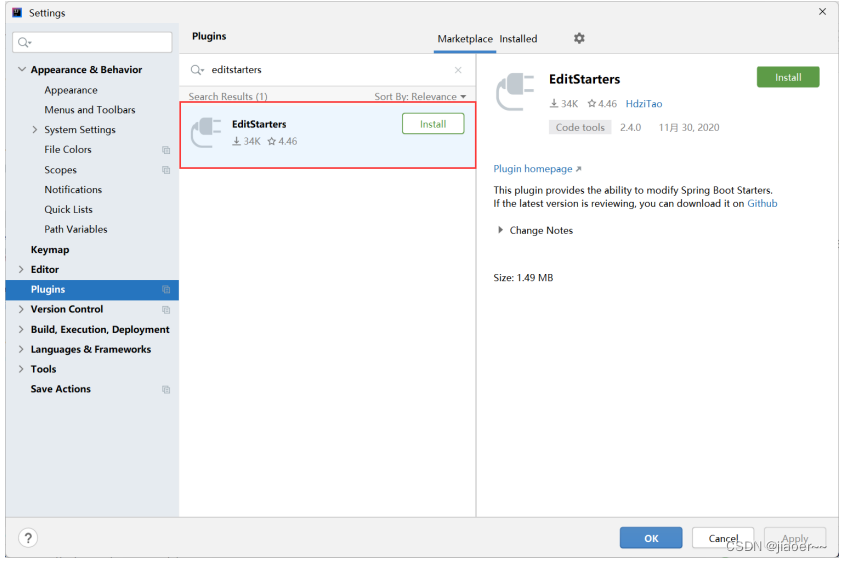
EditStarters 插件的使用方法:
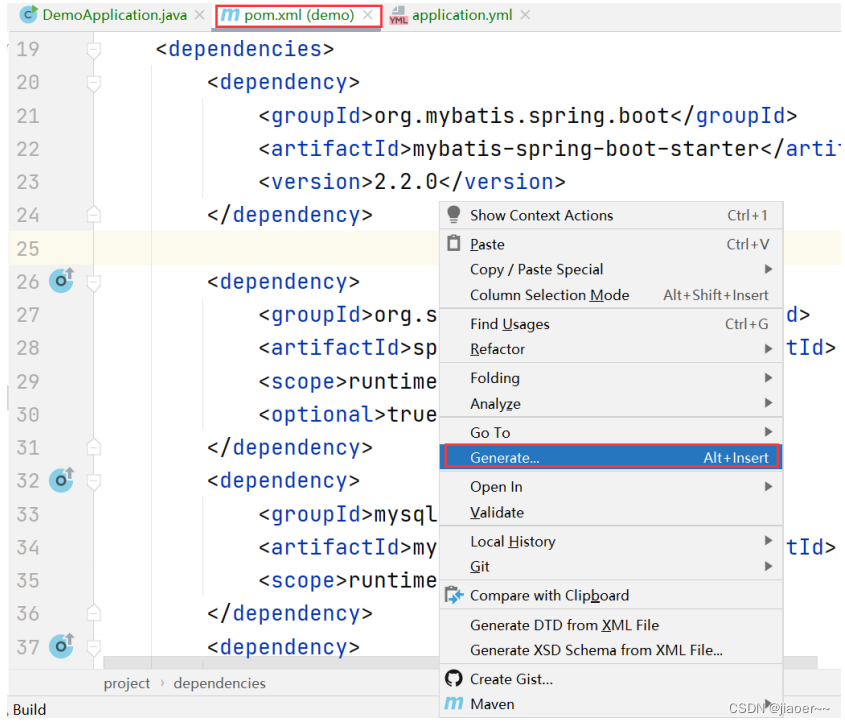 搜索“MyBatis”添加即可:
搜索“MyBatis”添加即可:

4.2.2 新项目添加MyBatis
如果是新项目创建 Spring Boot 项目的时候添加引用就可以了,如下图所示:
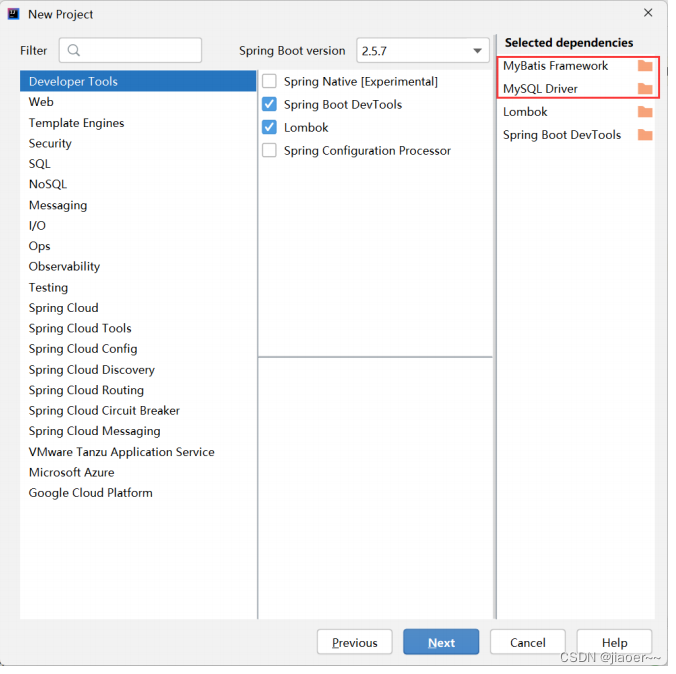
4.3 配置连接字符串和MyBatis
此步骤需要进行两项设置,数据库连接字符串设置和
MyBatis
的
XML
文件配置。
4.3.1 配置连接字符串
如果是
application.yml
添加如下内容:
# 数据库连接配置
spring:
datasource:
url: jdbc:mysql://localhost:3306/mycnblog?characterEncoding=utf8&useSSL=false
username: root
password: root
driver-class-name: com.mysql.cj.jdbc.Driver
注意事项:
如果使用
MySQL
是
5.x
之前的使用的是
“com.mysql.jdbc.Driver”
,如果是大于
5.x
使用的是
“com.mysql.cj.jdbc.Driver”
。
4.3.2 配置 MyBatis 中的 XML 路径
MyBatis
的
XML
中保存是查询数据库的具体操作
SQL
,配置如下:
# 配置 mybatis xml 的文件路径,在 resources/mapper 创建所有表的 xml 文件
mybatis:
mapper-locations: classpath:mapper/**Mapper.xml4.4 添加业务代码
下面按照后端开发的工程思路,也就是下面的流程来实现 MyBatis 查询所有用户的功能:

4.4.1 添加实体类
先添加用户的实体类:
import lombok.Data;
import java.util.Date;
@Data
public class User {
private Integer id;
private String username;
private String password;
private String photo;
private Date createTime;
private Date updateTime;
}4.4.2 添加 mapper 接口
数据持久层的接口定义:
import org.apache.ibatis.annotations.Mapper;
import java.util.List;
@Mapper
public interface UserMapper {
public List<User> getAll();
}4.4.3 添加 UserMapper.xml
数据持久成的实现,
mybatis
的固定
xml
格式:
<?xml version="1.0" encoding="UTF-8"?>
<!DOCTYPE mapper PUBLIC "-//mybatis.org//DTD Mapper 3.0//EN" "http://mybatis.org/dtd/mybatis-3-mapper.dtd">
<mapper namespace="com.example.demo.mapper.UserMapper">
</mapper>
UserMapper.xml
查询所有用户的具体实现
SQL
:
<?xml version="1.0" encoding="UTF-8"?>
<!DOCTYPE mapper PUBLIC "-//mybatis.org//DTD Mapper 3.0//EN" "http://mybatis.org/dtd/mybatis-3-mapper.dtd">
<mapper namespace="com.example.demo.mapper.UserMapper">
<select id="getAll" resultType="com.example.demo.model.User">
select * from userinfo
</select>
</mapper>
以下是对以上标签的说明:
1. <mapper>
标签:需要指定
namespace
属性,表示命名空间,值为
mapper
接口的全限定名,包括全包名
.
类名。
2. <select>查询标签:是用来执行数据库的查询操作的:
- id:是和 Interface(接口)中定义的方法名称一样的,表示对接口的具体实现方法。
- resultType:是返回的数据类型,也就是开头我们定义的实体类。
4.4.4 添加 Service
服务层实现代码如下:
import org.springframework.stereotype.Service;
import javax.annotation.Resource;
import java.util.List;
@Service
public class UserService {
@Resource
private UserMapper userMapper;
public List<User> getAll() {
return userMapper.getAll();
}
}4.4.5 添加 Controller
控制器层的实现代码如下:
import org.springframework.web.bind.annotation.RequestMapping;
import org.springframework.web.bind.annotation.RestController;
import javax.annotation.Resource;
import java.util.List;
@RestController
@RequestMapping("/u")
public class UserController {
@Resource
private UserService userService;
@RequestMapping("/getall")
public List<User> getAll(){
return userService.getAll();
}
}
以上代码写完,整个
MyBatis
的查询功能就实现完了,接下来使用
postman
来测试一下。
4.4.6 使用 postman 测试
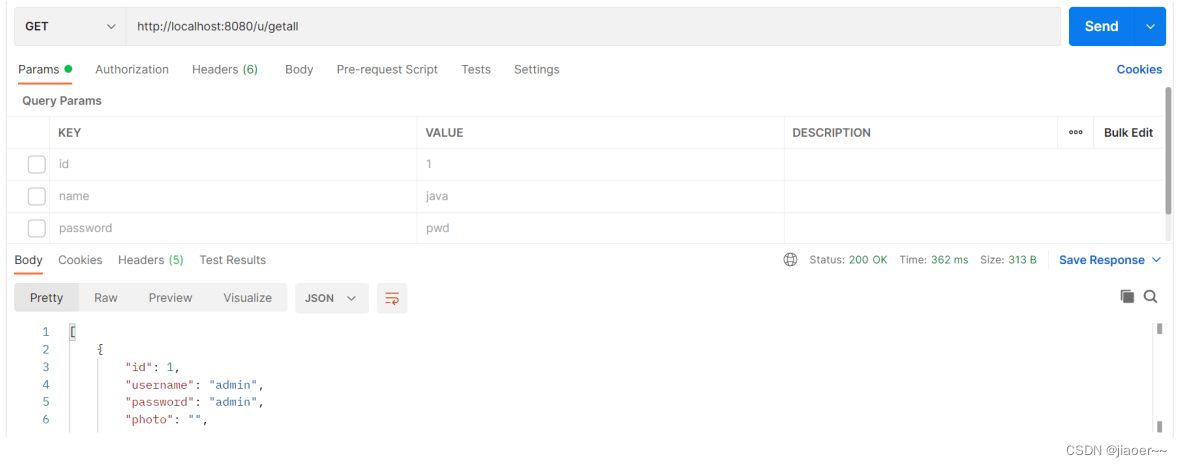
五、增、删、改操作
接下来,我们来实现一下用户的增加、删除和修改的操作,对应使用
MyBatis
的标签如下:
- 标签:插入语句
- 标签:修改语句
- 标签:删除语句
具体实现如下。
5.1 增加用户操作
controller
实现代码:
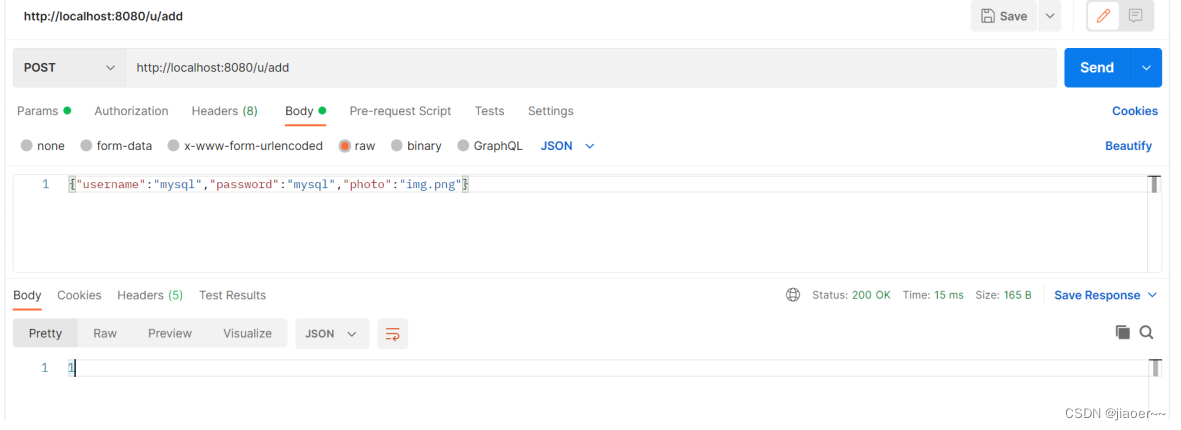
@RequestMapping(value = "/add",method = RequestMethod.POST)
public Integer add(@RequestBody User user){
return userService.getAdd(user);
}
mapper interface
:
Integer add(User user);
mapper.xml
<insert id="add">
insert into userinfo(username,password,photo,state)
values(#{username},#{password},#{photo},1)
</insert>Postman 添加访问:

默认情况下返回的是受影响的行数,如上图所示,用到的
json
数据如下:
{"username":"mysql","password":"mysql","photo":"img.png"}特殊的添加:返回自增 id
默认情况下返回的是受影响的行号,如果想要返回自增
id
,具体实现如下。
controller
实现代码:
@RequestMapping(value = "/add2", method = RequestMethod.POST)
public Integer add2(@RequestBody User user) {
userService.getAdd2(user);
return user.getId();
}
mapper
接口:
@Mapper
public interface UserMapper {
// 添加,返回自增id
void add2(User user);
}
mapper.xml
实现如下:
<!-- 返回自增id -->
<insert id="add2" useGeneratedKeys="true" keyProperty="id">
insert into userinfo(username,password,photo,state)
values(#{username},#{password},#{photo},1)
</insert>- useGeneratedKeys:这会令 MyBatis 使用 JDBC 的 getGeneratedKeys 方法来取出由数据库内部生成的主键(比如:像 MySQL 和 SQL Server 这样的关系型数据库管理系统的自动递增字段),默认值:false。
- keyColumn:设置生成键值在表中的列名,在某些数据库(像 PostgreSQL)中,当主键列不是表中的第一列的时候,是必须设置的。如果生成列不止一个,可以用逗号分隔多个属性名称。
- keyProperty:指定能够唯一识别对象的属性,MyBatis 会使用 getGeneratedKeys 的返回值或 insert 语句的 selectKey 子元素设置它的值,默认值:未设置(unset)。如果生成列不止一个,可以用逗号分隔多个属性名称。
postman
返回结果:

5.2 修改用户操作
controller
:

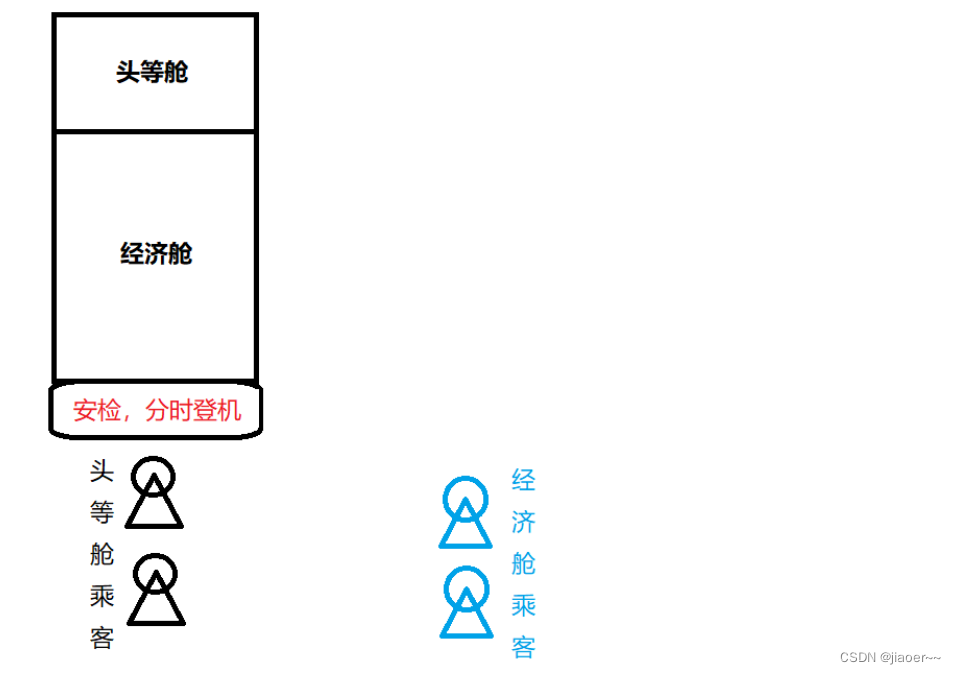

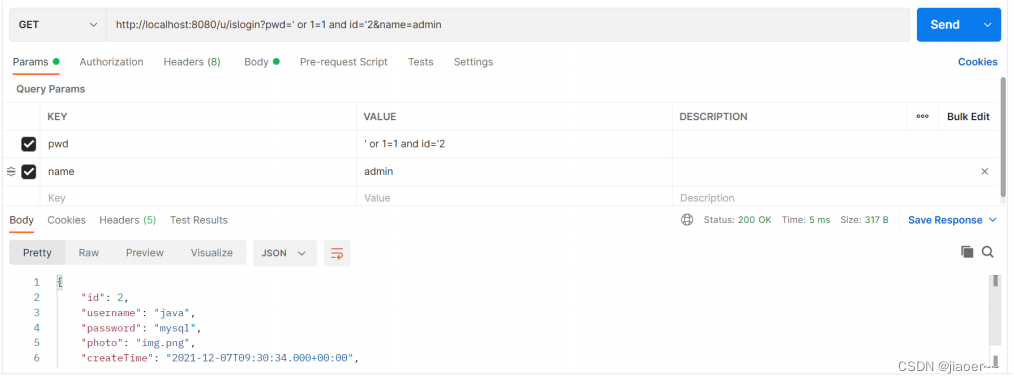
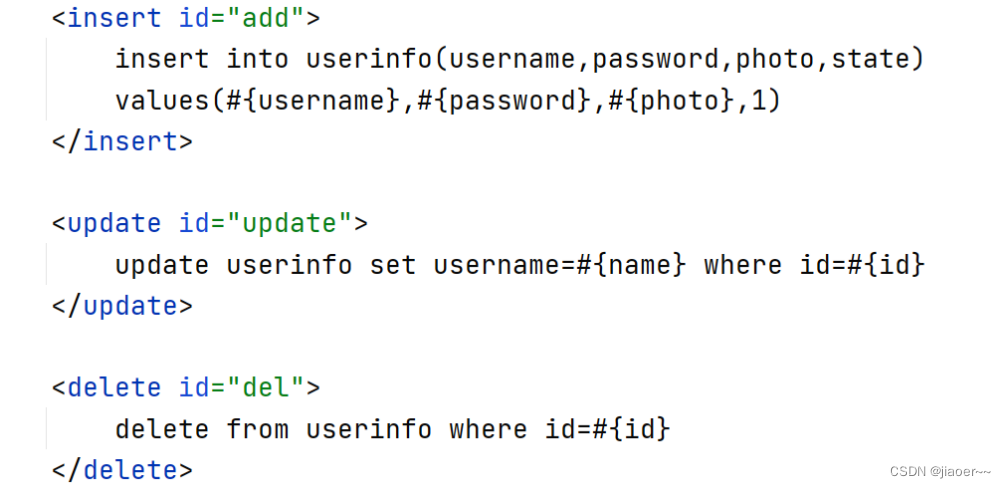
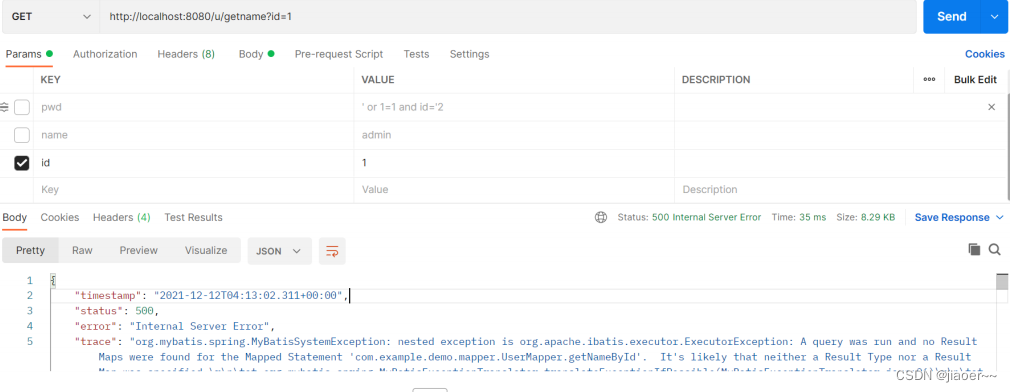
/**
* 修改操作
*
* @param id
* @param name
* @return
*/
@RequestMapping("/update")
public Integer update(Integer id, String name) {
return userService.update(id, name);
}
mapper.xml
实现代码:
<update id="update">
update userinfo set username=#{name} where id=#{id}
</update>5.3 删除用户操作
<delete id="delById" parameterType="java.lang.Integer">
delete from userinfo where id=#{id}
</delete>六、查询操作
6.1 单表查询
下面我们来实现一下根据用户
id
查询用户信息的功能。
Controller
实现代码如下:
@RequestMapping("/getuser")
public User getUserById(Integer id) {
return userService.getUserById(id);
}
Mapper.xml
实现代码如下:
<select id="getUserById" resultType="com.example.demo.model.User">
select * from userinfo where id=#{id}
</select>6.1.1 参数占位符 #{} 和 ${}
- #{}:预编译处理。
- ${}:字符直接替换。
- 预编译处理是指:MyBatis 在处理#{}时,会将 SQL 中的 #{} 替换为?号,使用 PreparedStatement 的 set 方法来赋值。
- 直接替换:是 MyBatis 在处理 ${} 时,就是把 ${} 替换成变量的值。
预编译处理和字符串替换的区别故事(头等舱和经济舱乘机分离的故事): 在坐飞机的时候头等舱和经济舱的区别是很大的,如下图所示:

一般航空公司乘机都是头等舱和经济舱分离的,头等舱的人先登机,登机完之后,封闭经济舱,然后再让经济舱的乘客登机,这样的好处是可以避免浑水摸鱼,经济舱的人混到头等舱的情况,这就相当于预处理,可以解决程序中不安全(越权处理)的问题。

而直接替换的情况相当于,头等舱和经济舱不分离的情况,这样经济舱的乘客在通过安检之后可能越权摸到头等舱,如下图所示:

这就相当于参数直接替换,它的问题是可能会带来越权查询和操作数据等问题,比如后面的
SQL
注入问题。
6.1.2 ${} 优点

<select id="getAllBySort" parameterType="java.lang.String" resultType="com.example.demo.model.User">
select * from userinfo order by id ${sort}
</select>
使用
${sort}
可以实现排序查询,而使用
#{sort}
就不能实现排序查询了,因为当使用
#{sort}
查询时,如果传递的值为
String
则会加单引号,就会导致 sql
错误。
6.1.3 SQL 注入问题
<select id="isLogin" resultType="com.example.demo.model.User">
select * from userinfo where username='${name}' and password='${pwd}'
</select>
sql
注入代码:
“' or 1='1”

结论:用于查询的字段,尽量使用
#{}
预查询的方式。
6.1.4 like 查询
like
使用
#{}
报错
<select id="findUserByName2" resultType="com.example.demo.model.User">
select * from userinfo where username like '%#{username}%';
</select>
相当于:
select * from userinfo where username like '%'username'%';
这个是不能直接使用
${}
,可以考虑使用
mysql
的内置函数
concat()
来处理,实现代码如下:
<select id="findUserByName3" resultType="com.example.demo.model.User">
select * from userinfo where username like concat('%',#{username},'%');
</select>6.2 多表查询
如果是增、删、改返回搜影响的行数,那么在 mapper.xml 中是可以不设置返回的类型的,如下图所示:

然而即使是最简单查询用户的名称也要设置返回的类型,否则会出现如下错误。
查询不设置返回类型的错误示例演示
controller
代码:
@RequestMapping("/getname")
public String getNameById(Integer id) {
return userService.getNameById(id);
}
mapper.xml
实现代码:
<select id="getNameById">
select username from userinfo where id=#{id}
</select>
访问接口执行结果如下:

显示运行了一个查询但没有找到结果映射,也就是说对于它的优点是使用方便,直接定义到某个实体类即可。
6.2.2 返回字典映射:resultMap
resultMap 使用场景:
- 字段名称和程序中的属性名不同的情况,可使用 resultMap 配置映射;
- 一对一和一对多关系可以使用 resultMap 映射并查询数据。
字段名和属性名不同的情况

程序中的属性如下:
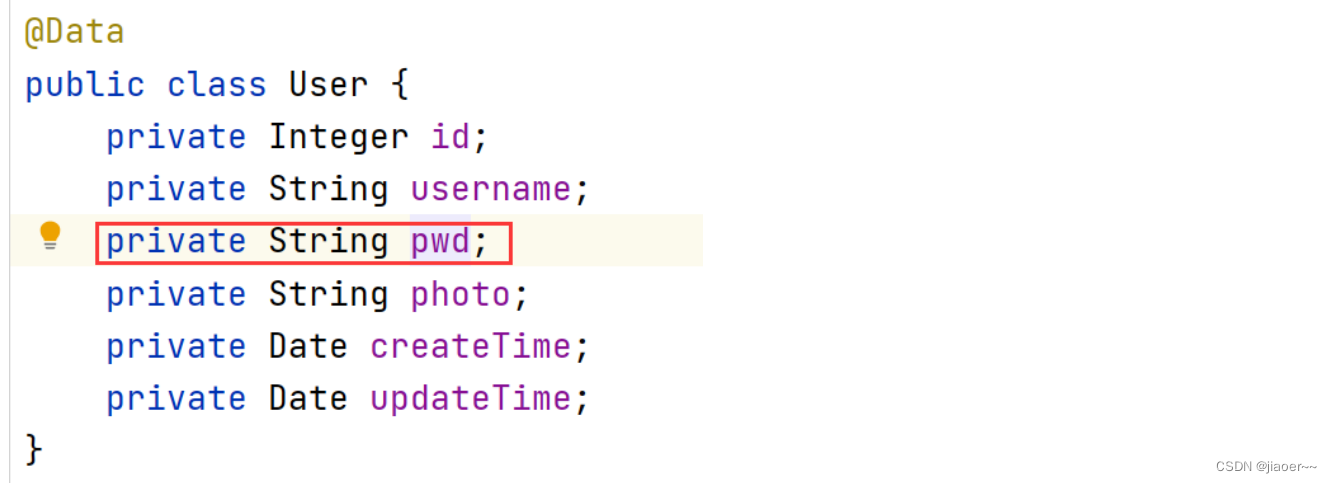
mapper.xml 代码如下:
<select id="getUserById" resultType="com.example.demo.model.User">
select * from userinfo where id=#{id}
</select>查询的结果如下:
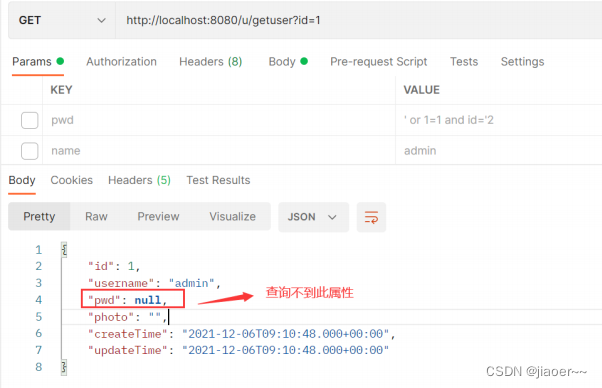
这个时候就可以使用 resultMap 了,resultMap 的使用如下:

mapper.xml
<resultMap id="BaseMap" type="com.example.demo.model.User">
<id column="id" property="id"></id>
<result column="username" property="username"></result>
<result column="password" property="pwd"></result>
</resultMap>
<select id="getUserById" resultMap="com.example.demo.mapper.UserMapper.BaseMap">
select * from userinfo where id=#{id}
</select>查询的结果就有值了,如下图所示:

6.2.3 多表查询
6.2.3.1 一对一的表映射
一对一映射要使用 标签,具体实现如下(一篇文章只对应一个作者):
<resultMap id="BaseMap" type="com.example.demo.model.ArticleInfo">
<id property="id" column="id"></id>
<result property="title" column="title"></result>
<result property="content" column="content"></result>
<result property="createtime" column="createtime"></result>
<result property="updatetime" column="updatetime"></result>
<result property="uid" column="uid"></result>
<result property="rcount" column="rcount"></result>
<result property="state" column="state"></result>
<association property="user"
resultMap="com.example.demo.mapper.UserMapper.BaseMap"
columnPrefix="u_">
</association>
</resultMap>
<select id="getAll" resultMap="BaseMap">
select a.*,u.username u_username from articleinfo a
left join userinfo u on a.uid=u.id
</select>
以上使用 标签,表示一对一的结果映射:
- property 属性:指定 Article 中对应的属性,即用户。
- resultMap 属性:指定关联的结果集映射,将基于该映射配置来组织用户数据。
- columnPrefix 属性:绑定一对一对象时,是通过 columnPrefix+association.resultMap.column 来映射结果集字段。association.resultMap.column是指 标签中 resultMap属性,对应的结果集映射中,column字段。
注意事项:column不能省略
articleinfo:
import java.time.LocalDateTime;
@Data
public class ArticleInfo {
private Integer id;
private String title;
private String content;
private LocalDateTime createtime;
private LocalDateTime updatetime;
private Integer rcount;
private User user;
}
ArticleController
:
import com.example.demo.model.ArticleInfo;
import com.example.demo.service.ArticleService;
import org.springframework.web.bind.annotation.RequestMapping;
import org.springframework.web.bind.annotation.RestController;
import javax.annotation.Resource;
import java.util.List;
@RequestMapping("/a")
@RestController
public class ArticleController {
@Resource
private ArticleService articleService;
@RequestMapping("/getall")
public List<ArticleInfo> getAll() {
return articleService.getAll();
}
}
columnPrefix
如果省略,并且恰好两个表中如果有相同的字段,那么就会导致查询出错,示例如下:
<resultMap id="BaseMap" type="com.example.demo.model.ArticleInfo">
<id property="id" column="id"></id>
<result property="title" column="title"></result>
<result property="content" column="content"></result>
<result property="createtime" column="createtime"></result>
<result property="updatetime" column="updatetime"></result>
<result property="uid" column="uid"></result>
<result property="rcount" column="rcount"></result>
<result property="state" column="state"></result>
<association property="user"
resultMap="com.example.demo.mapper.UserMapper.BaseMap">
</association>
</resultMap>
<select id="getAll" resultMap="BaseMap">
select a.*,u.id from articleinfo a
left join userinfo u on a.uid=u.id
</select>
service
:
import com.example.demo.mapper.ArticleMapper;
import com.example.demo.model.ArticleInfo;
import org.springframework.stereotype.Service;
import javax.annotation.Resource;
import java.util.List;
@Service
public class ArticleService {
@Resource
private ArticleMapper articleMapper;
public List<ArticleInfo> getAll() {
return articleMapper.getAll();
}
}
Mapper
:
import com.example.demo.model.ArticleInfo;
import org.apache.ibatis.annotations.Mapper;
import java.util.List;
@Mapper
public interface ArticleMapper {
List<ArticleInfo> getAll();
}
mapper.xml
<?xml version="1.0" encoding="UTF-8"?>
<!DOCTYPE mapper PUBLIC "-//mybatis.org//DTD Mapper 3.0//EN" "http://mybatis.org/dtd/mybatis-3-mapper.dtd">
<mapper namespace="com.example.demo.mapper.ArticleMapper">
<resultMap id="BaseMap" type="com.example.demo.model.ArticleInfo">
<id column="id" property="id"></id>
<result column="title" property="title"></result>
<result column="content" property="content"></result>
<association property="user"
resultMap="com.example.demo.mapper.UserMapper.BaseMap">
</association>
</resultMap>
<select id="getAll" resultMap="BaseMap">
select a.*,u.* from articleinfo a
left join userinfo u on u.id=a.uid
</select>
</mapper>
userinfo
表中有
id
字段,
articleinfo
中也有一个
id
字段,会导致查询出错结果如下:

两篇文章都是
uid=1
的作者写的,但这块显示的
user id
有两个,查询出错了。
正确的做法是添加
columnPrefix
,实现代码如下:

<resultMap id="BaseMap" type="com.example.demo.model.ArticleInfo">
<id column="id" property="id"></id>
<result column="title" property="title"></result>
<result column="content" property="content"></result>
<association property="user"
resultMap="com.example.demo.mapper.UserMapper.BaseMap"
columnPrefix="u_">
</association>
</resultMap>
执行结果如下:

6.2.3.2 一对多:一个用户多篇文章案例
一对多需要使用 标签,用法和 相同,如下所示:
<resultMap id="BaseMap" type="com.example.demo.model.User">
<id column="id" property="id" />
<result column="username" property="username"></result>
<result column="password" property="password"></result>
<result column="photo" property="photo"></result>
<collection property="alist" resultMap="com.example.demo.mapper.ArticleInfoMapper.BaseMap"
columnPrefix="a_">
</collection>
</resultMap>
<select id="getUserById" resultMap="BaseMap">
select u.*,a.title a_title from userinfo u
left join articleinfo a on u.id=a.uid where u.id=#{id}
</select>七、复杂情况:动态SQL使用
动态
sql
是
Mybatis
的强大特性之一,能够完成不同条件下不同的
sql
拼接。
可以参考官方文档:
Mybatis
动态
sql
7.1 <if>标签
在注册用户的时候,可能会有这样一个问题,如下图所示:
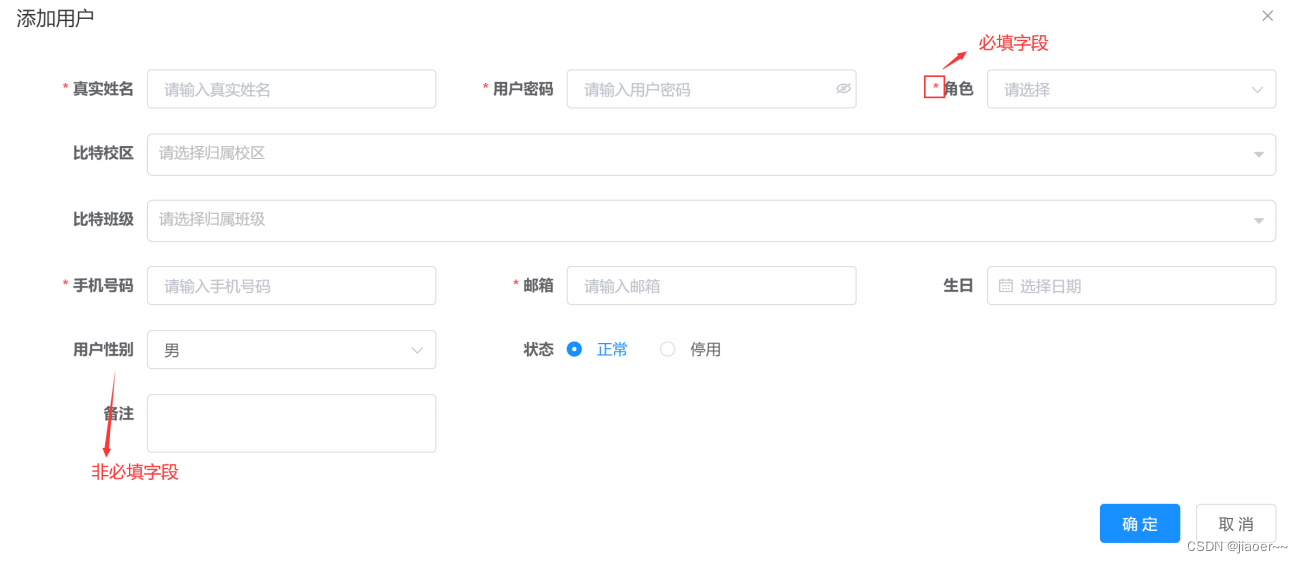
注册分为两种字段:必填字段和非必填字段,那如果在添加用户的时候有不确定的字段传入,程序应该如何实现呢?
这个时候就需要使用动态标签来判断了,比如添加的时候性别
sex
为非必填字段,具体实现如下:
<insert id="insert" parameterType="org.example.model.User" useGeneratedKeys="true" keyProperty="id">
insert into user(
username,
password,
nickname,
<if test="sex != null">
sex,
</if>
birthday,
head
) values (
#{username},
#{password},
#{nickname},
<if test="sex != null">
#{sex},
</if>
#{birthday},
#{head}
)
</insert>
注意
test
中的
sex
,是传入对象中的属性,不是数据库字段。
7.2 <trim>标签
之前的插入用户功能,只是有一个
sex
字段可能是选填项,如果有多个字段,一般考虑使用标签结合标签,对多个字段都采取动态生成的方式。
标签中有如下属性:
- prefix:表示整个语句块,以prefix的值作为前缀
- suffix:表示整个语句块,以suffix的值作为后缀
- prefixOverrides:表示整个语句块要去除掉的前缀
- suffixOverrides:表示整个语句块要去除掉的后缀
调整 UserMapper.xml 的插入语句为:
<insert id="insert" parameterType="org.example.model.User" useGeneratedKeys="true" keyProperty="id">
insert into user
<trim prefix="(" suffix=")" suffixOverrides=",">
<if test="username != null">
username,
</if>
<if test="password != null">
password,
</if>
<if test="nickname != null">
nickname,
</if>
<if test="sex != null">
sex,
</if>
<if test="birthday != null">
birthday,
</if>
<if test="head != null">
head,
</if>
<if test="createTime != null">
create_time,
</if>
</trim>
<trim prefix="values (" suffix=")" suffixOverrides=",">
<if test="username != null">
#{username},
</if>
<if test="password != null">
#{password},
</if>
<if test="nickname != null">
#{nickname},
</if>
<if test="sex != null">
#{sex},
</if>
<if test="birthday != null">
#{birthday},
</if>
<if test="head != null">
#{head},
</if>
<if test="createTime != null">
#{createTime},
</if>
</trim>
</insert>
在以上
sql
动态解析时,会将第一个 部分做如下处理:
- 基于 prefix 配置,开始部分加上 (
- 基于 suffix 配置,结束部分加上 )
- 多个 组织的语句都以 , 结尾,在最后拼接好的字符串还会以 , 结尾,会基于 suffixOverrides 配置去掉最后一个 ,
- 注意 <if test=“createTime != null”> 中的 createTime 是传入对象的属性
7.3 <where>标签
传入的用户对象,根据属性做
where
条件查询,用户对象中属性不为
null
的,都为查询条件。如
user.username
为
"a"
,则查询条件为
where username="a"
:
UserMapper
接口中新增条件查询方法:
List<User> selectByCondition(User user);
UserMapper.xml
中新增条件查询
sql
:
<select id="selectByCondition" parameterType="org.example.model.User" resultMap="BaseResultMap">
select id, username, password, nickname, sex, birthday, head, create_time
from user
<where>
<if test="username != null">
and username=#{username}
</if>
<if test="password != null">
and password=#{password}
</if>
<if test="nickname != null">
and nickname=#{nickname}
</if>
<if test="sex != null">
and sex=#{sex}
</if>
<if test="birthday != null">
and birthday=#{birthday}
</if>
<if test="head != null">
and head=#{head}
</if>
<if test="createTime != null">
and create_time=#{createTime}
</if>
</where>
</select>以上标签也可以使用 <trim prefix="where" prefixOverrides="and"> 替换。
7.4 <set>标签
根据传入的用户对象属性来更新用户数据,可以使用标签来指定动态内容。
UserMapper
接口中修改用户方法:根据传入的用户
id
属性,修改其他不为
null
的属性:
int updateById(User user);
UserMapper.xml
中添加更新用户
sql
:
<update id="updateById" parameterType="org.example.model.User">
update user
<set>
<if test="username != null">
username=#{username},
</if>
<if test="password != null">
password=#{password},
</if>
<if test="nickname != null">
nickname=#{nickname},
</if>
<if test="sex != null">
sex=#{sex},
</if>
<if test="birthday != null">
birthday=#{birthday},
</if>
<if test="head != null">
head=#{head},
</if>
<if test="createTime != null">
create_time=#{createTime},
</if>
</set>
where id=#{id}
</update>
以上标签也可以使用
<trim prefix="set" suffixOverrides=",">
替换。
7.4 <foreach>标签
对集合进行遍历时可以使用该标签。标签有如下属性:
- collection:绑定方法参数中的集合,如 List,Set,Map或数组对象
- item:遍历时的每一个对象
- open:语句块开头的字符串
- close:语句块结束的字符串
- separator:每次遍历之间间隔的字符串
示例:根据多个文章
id
来删除文章数据。
ArticleMapper
中新增接口方法:
int deleteByIds(List<Integer> ids);
ArticleMapper.xml
中新增删除
sql
:
<delete id="deleteByIds">
delete from article
where id in
<foreach collection="list" item="item" open="(" close=")" separator=",">
#{item}
</foreach>
</delete>




